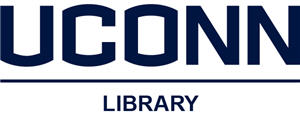Document Type
Article
Disciplines
Medicine and Health Sciences
Abstract
Unlike during embryogenesis, the identity of tissue resident progenitor cells that contribute to postnatal tendon growth and natural healing is poorly characterized. Therefore, we utilized 1) an inducible Cre driven by alpha smooth muscle actin (SMACreERT2), that identifies mesenchymal progenitors, 2) a constitutively active Cre driven by growth and differentiation factor 5 (GDF5Cre), a critical regulator of joint condensation, in combination with 3) an Ai9 Cre reporter to permanently label SMA9 and GDF5-9 populations and their progeny. In growing mice, SMA9 cells were found in peritendinous structures and scleraxis-positive (ScxGFP) cells within the tendon midsubstance and myotendinous junction. The progenitors within the tendon midsubstance were transiently labeled as they displayed a 4-fold expansion from day 2 to day 21 but reduced to baseline levels by day 70. SMA9 cells were not found within tendon entheses or ligaments in the knee, suggesting a different origin. In contrast to the SMA9 population, GDF5-9 cells extended from the bone through the enthesis and into a portion of the tendon midsubstance. GDF5-9 cells were also found throughout the length of the ligaments, indicating a significant variation in the progenitors that contribute to tendons and ligaments. Following tendon injury, SMA9 paratenon cells were the main contributors to the healing response. SMA9 cells extended over the defect space at 1 week and differentiated into ScxGFP cells at 2 weeks, which coincided with increased collagen signal in the paratenon bridge. Thus, SMA9-labeled cells represent a unique progenitor source that contributes to the tendon midsubstance, paratenon, and myotendinous junction during growth and natural healing, while GDF5 progenitors contribute to tendon enthesis and ligament development. Understanding the mechanisms that regulate the expansion and differentiation of these progenitors may prove crucial to improving future repair strategies.
Recommended Citation
Dyment, Nathaniel A.; Hagiwara, Yusuke; Matthews, Brya G.; Li, Yingcui; Kalajzic, Ivo; and Rowe, David W., "Lineage Tracing of Resident Tendon Progenitor Cells during Growth and Natural Healing" (2014). Open Access Author Fund Awardees' Articles. 29.
https://digitalcommons.lib.uconn.edu/libr_oa/29



Comments
Originally published in :
Citation: Dyment NA, Hagiwara Y, Matthews BG, Li Y, Kalajzic I, et al. (2014) Lineage Tracing of Resident Tendon Progenitor Cells during Growth and Natural Healing. PLoS ONE 9(4): e96113. doi:10.1371/journal.pone.0096113 Copyright: 2014 Dyment et al. This is an open-access article distributed under the terms of the Creative Commons Attribution License, which permits unrestricted use, distribution, and reproduction in any medium, provided the original author and source are credited